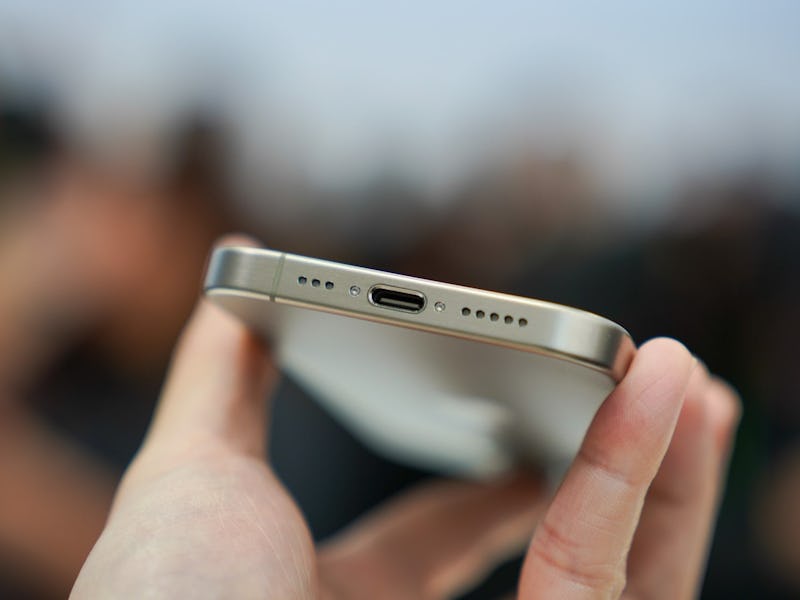The iPhone 15 and 15 Pro Have USB-C, but There’s a Huge Speed Difference
A switch to USB-C could have meant higher data transfer speeds for everyone. Sadly, that is not the case.

There’s a lot going on in the new iPhone 15, but the switch to USB-C is arguably the hardest shift to ignore. In addition to simplifying the amount of cables you have to keep track of (RIP Lightning), you’ll be able to take advantage of UBS-C’s superior specs like higher data transfer speeds... for a price, that is.
While USB-C does offer higher charge and data transfer speeds, Apple hasn’t made its iPhone 15 lineup quite so cut and dry. Let me explain.
USB- C on iPhone 15 Pro vs iPhone 15
Not all iPhone 15s are created equal.
Though all of Apple’s new iPhones use a USB-C port for charging instead of Lightning, not every single model uses the same underlying technology.
Specifically, the non-Pro models rely on USB 2.0 while Pro models (the 15 Pro and 15 Pro Max) use USB 3.0. That affects a few capabilities, and among them is data transfer speeds.
While USB 3.0 can give you 10 Gbps of speed, USB 2.0 clocks in at about 480 Mbps. That’s a pretty huge difference if you plan on transferring any appreciable amount of data on your base model iPhone 15.
What makes the difference in transfer speeds more notable is the fact that transfer speeds of USB 2.0 are on par with — you guessed it — Lightning. In other words: your new USB-C port will act just like the Lightning one you’ll be theoretically throwing in the trash — at least in terms of data transfer.
I doubt anyone is going to spring for an iPhone 15 Pro or 15 Pro Max based on data transfer speeds alone, but if you’re the type of person who this type of thing matters to then it’s worth thinking about.
Fortunately, if you are said person — someone who shoots high-res photos or lots of big video files — you’ll probably be most interested in buying an iPhone 15 Pro or 15 Pro Max anyway.
Why do transfer speeds matter?
Listen, for most people, wired data transfer speeds might not mean much of anything. But if you’re moving around big files — maybe you’re shooting in ProRAW or ProRES — and plan to edit that content on a device that is not your phone, then this is going to be a big difference. I mean really, who’s got the time to wait for 480 Mbps.
Also, let’s be honest — it is a little annoying that Apple seems to have paywalled higher data transfer speeds to an extent. Something tells me they could have equipped base iPhones with USB 3.0 fairly easily.
But that’s just the way it goes. I, for one, look forward to seeing the benefits of Apple’s USB-C transition down the line. An iPhone that actually has class-leading fast charging? Sign me up.